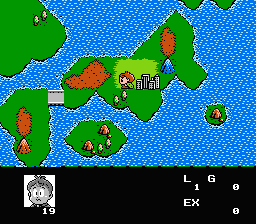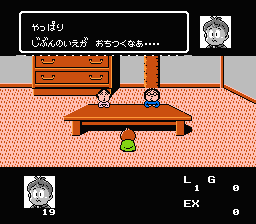Retro Replay Review
Gameplay
Akuma-kun: Makai no Wana delivers a distinctive blend of world‐map exploration and side‐scrolling town sequences that keeps every play session fresh. On the global map, you’ll chart the young protagonist’s journey across diverse regions, uncovering hidden caves, ancient ruins, and mystical landmarks. Transitioning into towns seamlessly shifts the perspective to a classic 2D side‐scroll, where NPC interactions, shop visits, and environmental puzzles offer a change of pace.
The turn‐based combat system is both approachable and deep. You command your human hero alongside an ever‐expanding roster of summoned demons. Each battle grants the opportunity to learn enemy weaknesses, exploit elemental affinities, and chain together demon‐specific abilities. Recruiting new demons made me feel like a true summoner; negotiations and demon fusion mirror the satisfying mechanics found in Megaten titles, yet maintain an identity all their own.
Quests are thoughtfully designed, with the initial mission of locating Cerberus serving as a textbook tutorial in exploration, combat, and summoning strategies. Side quests encourage experimentation with different demon lineups and party synergies. As the difficulty scales, you’re prompted to refine your tactics—swapping out demons for elemental counters or investing skill points into buffs that complement your main character’s support spells.
Controls and interface are intuitive, whether navigating the overworld or selecting commands in battle. Menus are clearly labeled, with helpful tooltips explaining each demon’s unique skills. For players new to turn‐based RPGs, the game eases you in gently, while veterans will appreciate advanced options like enemy analysis and demon skill inheritance.
Graphics
Visually, Akuma-kun: Makai no Wana adopts a charming pixel‐art aesthetic reminiscent of 16‐bit classics. Sprites are crisp and well‐animated—demons come to life with distinct run cycles and attack flourishes, while townsfolk in side‐scrolling areas exude personality through simple but effective animations. The protagonist’s little-boy design conveys innocence, a perfect contrast to the darker underworld denizens.
Environmental variety is one of the game’s strong suits. From sunlit village plazas to shadowy caverns echoing with distant howls, each locale is crafted with care. Color palettes shift subtly as you progress, evoking moods that range from hopeful discovery to ominous tension. Background layers move at different speeds, adding depth without overwhelming the eye.
Battlefields are presented on clean, uncluttered grids where each demon’s sprite stands out against the terrain. Spell effects—flames, lightning bolts, icy blasts—are vivid and satisfying. While the graphics don’t push modern hardware, they excel in clarity and style, making it easy to track every status effect, enemy animation, and damage number during hectic encounters.
Story
The narrative centers on a young boy entrusted by a sagacious magician with a cosmic task: fulfill an ancient Jewish prophecy by forging contact with demons. This premise injects a sense of wonder, as players balance the innocent curiosity of childhood with the weighty responsibility of shaping humanity’s future. Early cutscenes convey the mentor’s warmth and the boy’s initial trepidation, establishing emotional stakes before the first encounter with Cerberus.
Dialogue is concise yet evocative, with NPCs offering tidbits that enrich the game world. Townspeople debate whether demons are harbingers of salvation or doom, weaving moral ambiguity into seemingly mundane side conversations. These exchanges deepen the central theme: bridging the gap between two worlds often thought irreconcilable.
Pacing remains steady as the main quest evolves. After securing Cerberus’s allegiance, you’re drawn into increasingly complex prophecies and supernatural politics. The story never feels bogged down by exposition; new revelations come just often enough to keep curiosity piqued without derailing gameplay. Even optional dungeons tie back into the overarching narrative by revealing fragments of long‐lost lore.
Overall Experience
Akuma-kun: Makai no Wana strikes a compelling balance between accessibility and strategic depth. Its fusion of world‐map exploration, side‐scrolling town events, and robust summoning mechanics offers hours of varied gameplay. Each demon you recruit becomes part of a unique playstyle, rewarding experimentation and careful party management.
While the pixel‐art graphics may feel nostalgic rather than revolutionary, they serve the game’s tone beautifully—softening darker themes with a childlike charm. The story’s moral undertones and the protagonist’s earnest journey add narrative weight, encouraging players to reflect on themes of cooperation, trust, and the nature of good and evil.
For fans of turn‐based RPGs and demon‐summoning systems, Akuma-kun: Makai no Wana is a must‐consider purchase. Its engaging combat, varied locales, and thoughtful storyline create a memorable adventure that stands on its own merits. Newcomers and genre veterans alike will find plenty to admire in this little boy’s epic quest to reshape the world.
 Retro Replay Retro Replay gaming reviews, news, emulation, geek stuff and more!
Retro Replay Retro Replay gaming reviews, news, emulation, geek stuff and more!








Reviews
There are no reviews yet.